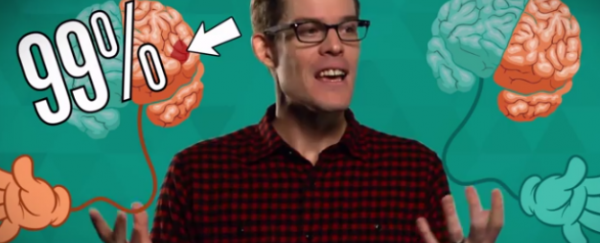
When you think about it, the fact that the right and left-handedness in humans isn't a 50/50 split is pretty strange. Both of our hands seem fully capable, and they're both connected to perfectly functional arms, so why would so many of us end up unconsciously siding with our right hands soon after we're born?
'Handedness' is not restricted to humans, says Joe Hansen in the latest episode of It's Okay To Be Smart. Throughout the animal kingdom we see creatures with a preference for one paw, hoof, or wing, but for them, it's usually a 50/50 split. But in humans, only one in 10 people globally are left-handed.
Scientists think the explanation has something to do with the cross-wiring of our brains. Oddly enough, our right hands are controlled by the left sides of our brains, and our left hands our controlled by the right sides of our brains. But that doesn't mean our brains are symmetrical. In fact, different sides of our brains perform unique functions. For example, the region of our brains that controls how we process speech - first discovered in the 1860s by French scientist Paul Broca - is usually only located on only one side. No one's entirely sure why, but it could be because language processing is an incredibly complex functon, so the brain restricts it to one side to deal with it more efficiently.
"Today we know that in 99 percent of right-handers' brains, Broca's area is located only in the left hemisphere," says Joe. "And in left-handers' brains… it's also on the left. Seventy percent of the time." Only 19 percent of left-handed people process speech in the right hemispheres of their brains, and then 20 percent of those people happen to use both hemispheres. Which is pretty confusing, but the secret to right and left-handedness still appears to lie within the connection between our language processessing and our hands, as determined by our genes.
Want to know why? Watch the latest episode of It's Okay To Be Smart above to find out.
Source: It's Okay To be Smart
